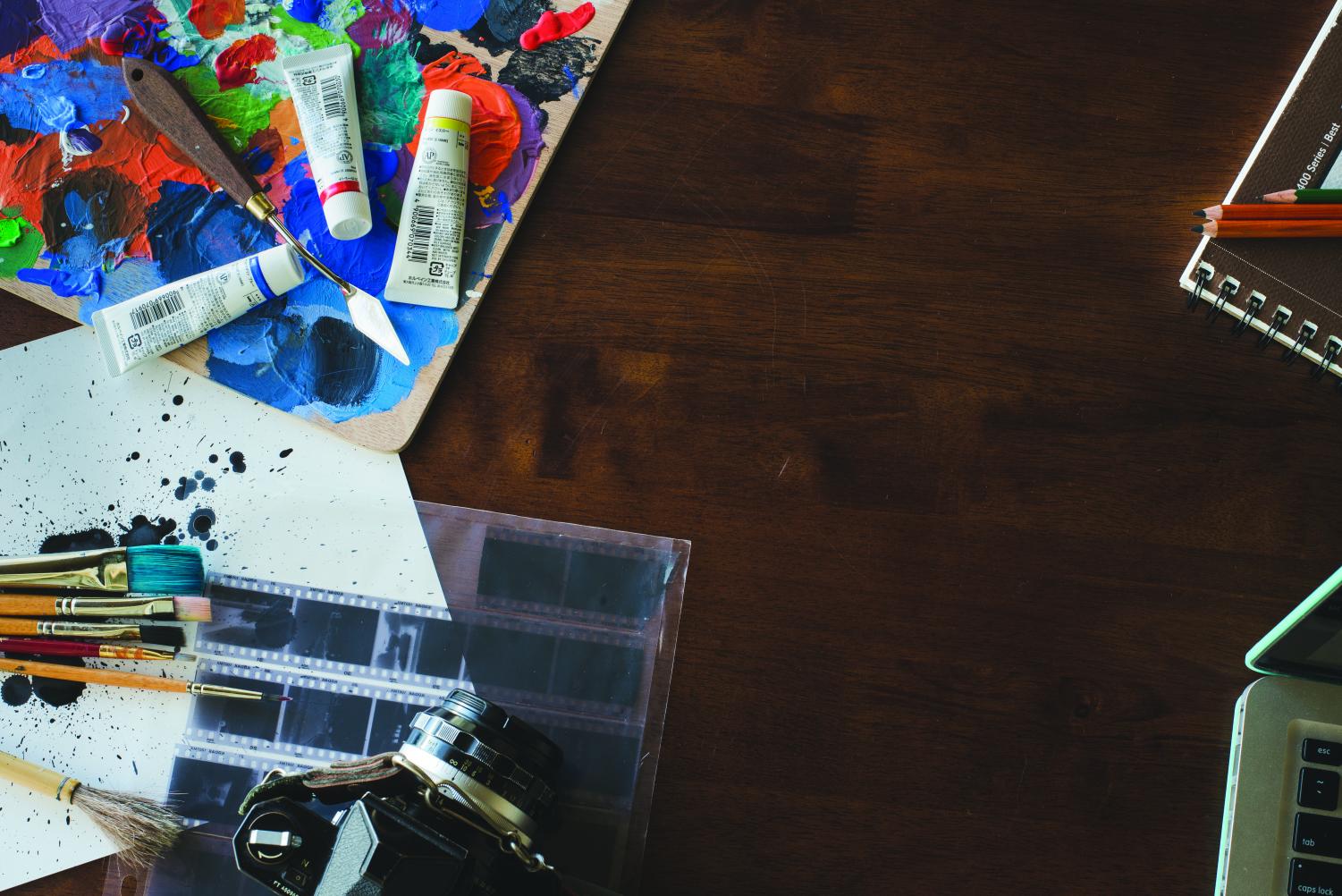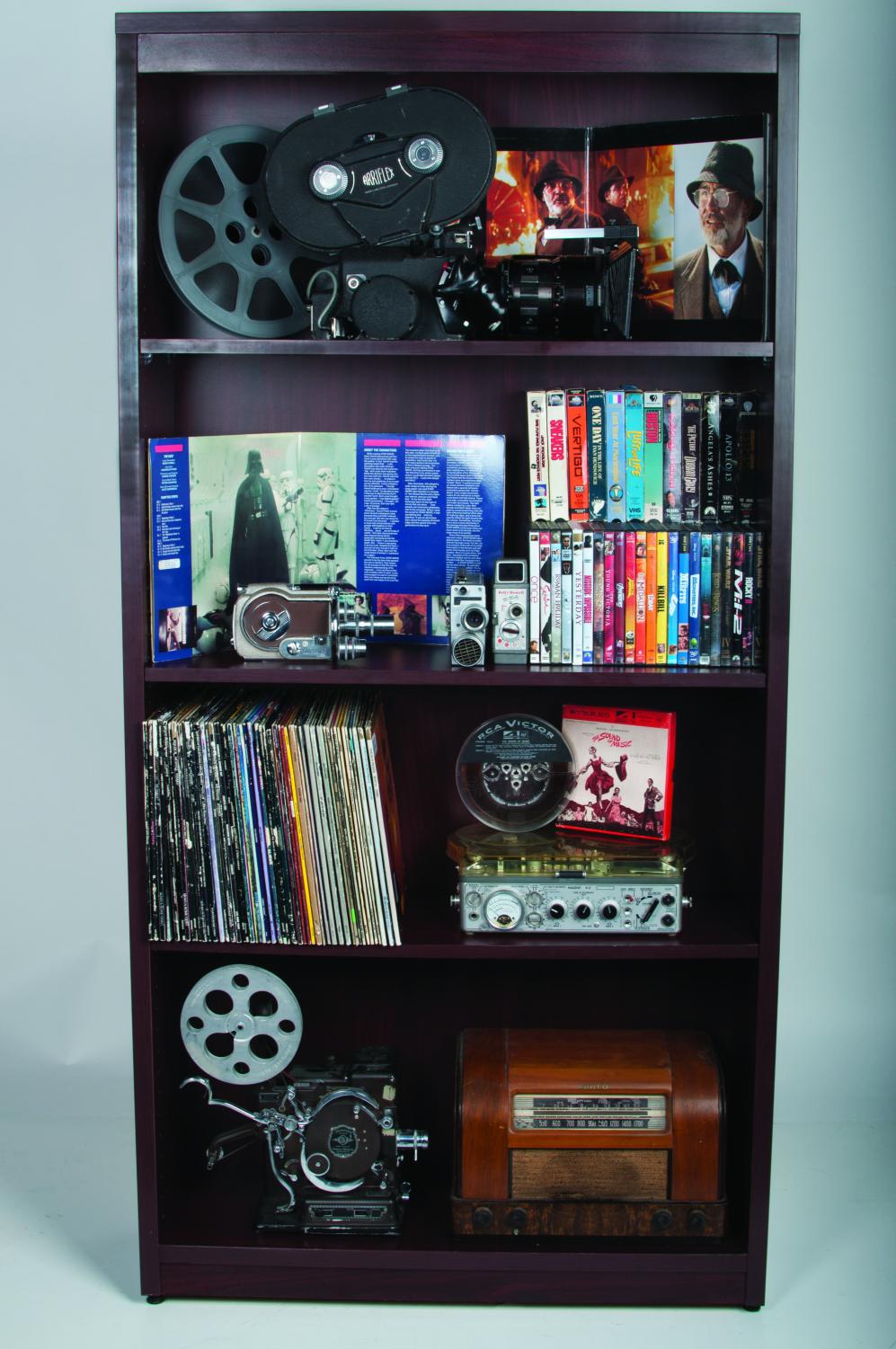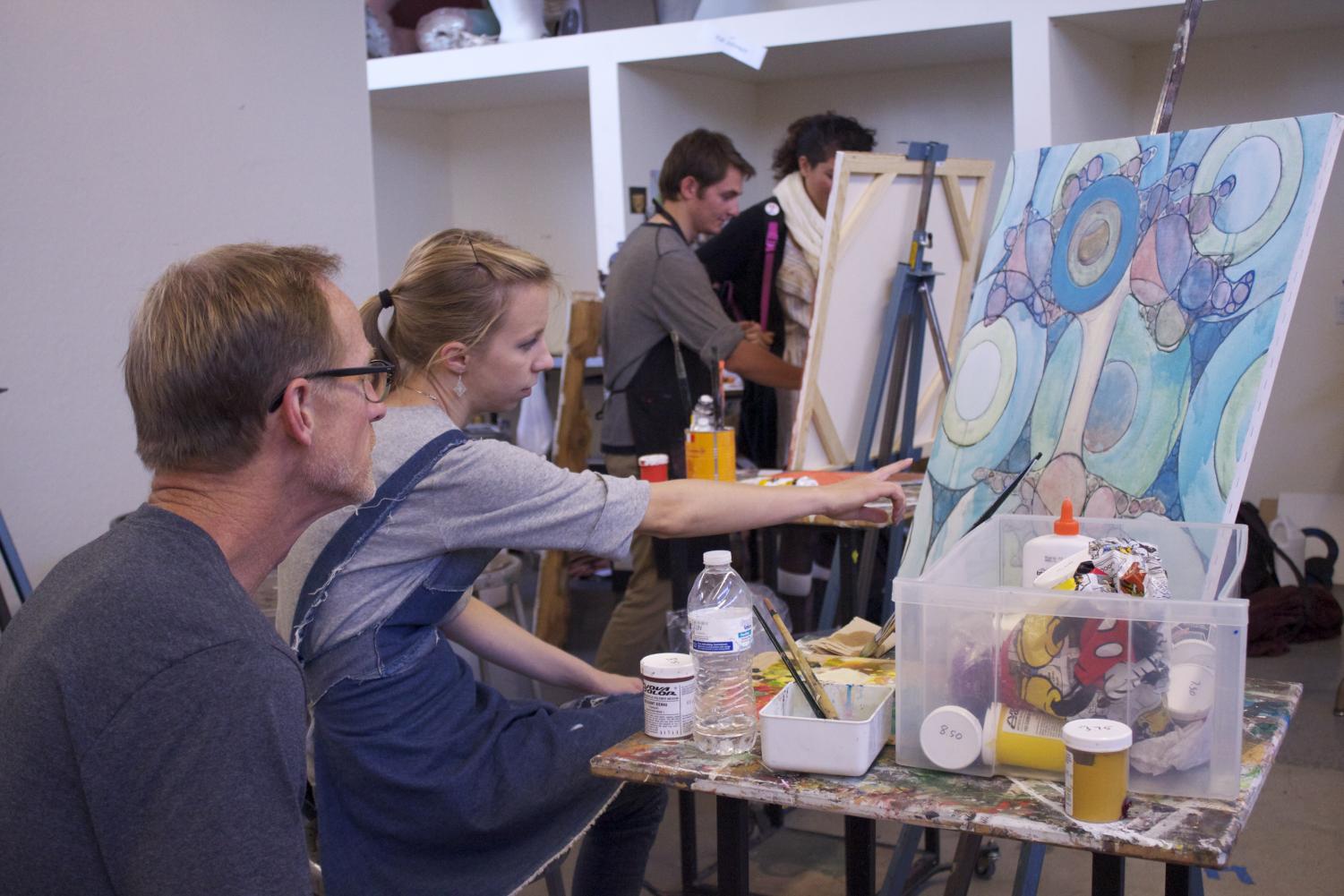Written by Candace Guereque
Exhibiting Boldness Nery Gabriel Lemus, whose exhibit I Was a Stranger and You Welcomed Mewas displayed in Biola’s Earl and Virginia Green Art Gallery this fall, is a local artist from the Los Angeles area. Choosing no preferred medium, he lets art take him where it leads him.
Lemus’ exhibit consisted of art made in a handful of ways—photographs from his childhood; words oil-painted on colorful backdrops; a reunion captured on video; and even halves of the American and Guatemalan flags stitched together. Grateful for the many privileges he’s had in his upbringing and education, Lemus draws predominately from his childhood and the many racial tensions he’s observed in his own life and the world around him.
At a very young age, Nery Lemus recognized racism from firsthand experiences. While accompanying his mom, a Guatemalan immigrant, to her housekeeping job on the bus ride to Calabasas, he experienced unjust treatment from crude remarks and inconsiderate behavior from strangers. Yet from day to day his mother was treated kindly by an employer’s family, in a way many were not.
“She was welcomed,” Lemus says, reflecting on the relationship that emerged between the two Christian families. The employers became so close to the family that one of them took on the role of godfather to young Nery. “In most working relationships there seems to be a system of hierarchy where the employer and employee don’t really interact like friends, but for my mom it was different. They were friends. When she ate, she ate with them. We went to their house for Christmas and Thanksgiving.”
In his latest exhibit, Lemus sought to expose his family’s rare experience and express his beliefs about interacting with those who have immigrated to the United States.
Once, while working at a book store and speaking Spanish to a customer, Lemus was told by an onlooker to go back to his country. This very hard moment has never left his mind. Situations like these, he says, shape generalizations we have in society. However, along with the strife that occurred at the bookstore, Lemus has a positive story to remember.
“A lot of people with those experiences stick with them and they tend to generalize people, and since I’ve always had this experience, I had a healthy way of looking at things,” he concludes. “I always knew there was another side to it.”
The journey that has led Lemus up to this point has contributed to the shaping and molding of his artistic voice. He is very passionate about tackling various subjects, ranging from racial segregation to societal problems that affect family unity like poverty, abuse and neglect. These passions drive his work. Artists like Lemus, who strive to provoke lasting change through their work, communicate more than just an aesthetically pleasing experience. They seek true movement in the mind of their audience.
Artists of Faith “When I am not focused on God or when I’m filling my mind with Godless things, my art is just dumb,” states Hannah Mosebar, a senior art major. “It may look cool on the outside but there is nothing special, inspiring or encouraging about it; it’s just kind of there. But on the other hand, when I am in a good relationship with God, focusing on Him, there are so many more creative processes to go through. When I have His joy in me, there’s no end to my work.”
Through a heavily interlinked relationship, the Holy Spirit plays a huge role in the truth that comes through a believer’s art.
Drawing and painting professor Daniel Callis has also observed something very compelling about the mark some artists’ faith has made on their work. “Part of maturing in the Christian faith is growing up into the reality of who we are in Christ, which should give us incredible freedom, incredible fearlessness and an incredible curiosity to be more experimental, more provocative and more risky than artists that don’t know or have the faith we have,” Callis explains. “However, that is often not the case. Because we are human, we shackle that faith or haven’t developed that faith.”
Associate photography professor Kurt Simonson recalls the difference he’s perceived in the art from his students of faith and the students who do not believe. “It seems like our students here [at Biola] are really interested in personal work, that is more about God and about others,” he says. “Usually in other public schools I’ll see a lot of work about political issues or social issues—and those things matter and people here care about them too—but people here are more unafraid to make work about personal life, things that are affecting them, and be more transparent and vulnerable, which I think is very unique.” Simonson said perhaps the more personal emphasis among Christians comes from the openness that the Christian community inherently has.
Lemus displayed both personal and social interests in his exhibition. He challenged the audience to look past racial divisions and to display kindness and love as Christ would.
Contributing to the Community “These are images of myself and the other grandchildren that were around when my mom worked, and this was my experience growing up,” Lemus says, overlooking an untitled photographic piece showing himself and the grandson of his mother’s employer. “It points to this innocence, that when you’re a kid you don’t think about these divisions in identity because you’re just a child, and as you grow up you start developing this sense of difference.”
From how he communicated his passion, one could tell Lemus’ exhibit came from a deep place of gratitude and compassion—gratitude for the life Christ has given him, and compassion for others who may have gone through just as much.
In his book God in the Gallery, Daniel Siedell suggests that art-making is intrinsically helpful in doing God’s will. “A work of art enables the self to move beyond and outside itself toward another object, and this process has a significant impact on the self’s development toward a reconciled relationship with the world. This transcendent relationship makes love possible … by helping us move beyond ourselves toward our neighbor and toward God.”
Art’s contribution to society and within the Christian community is at times highly overlooked. The power that comes from God and then to humanity in the will to create has the potential to shape people and bring them closer to Christ. Art is the platform where issues can be worked out—where there is enough freedom for two different individuals or communities of people with different views, backgrounds and beliefs to come together and discuss.
Thus our hope should be that artists feel supported by their community in their message; that they feel confident that the powerful medium of their God-given art contributes evangelistically to the Kingdom.
For a believing artist, there is far more from which to glean. As Francis Schaeffer states in his book Art and the Bible, “The Christian is the one whose imagination should fly beyond the stars.”
Or, as Daniel Callis says,“It is a real challenge for us as believers, that we actually draw from a profoundly deeper pool and have the resource of the Holy Spirit in our daily life. Ultimately it is not a career we are serving; it’s an eternal God we’re serving—which actually changes everything.”





